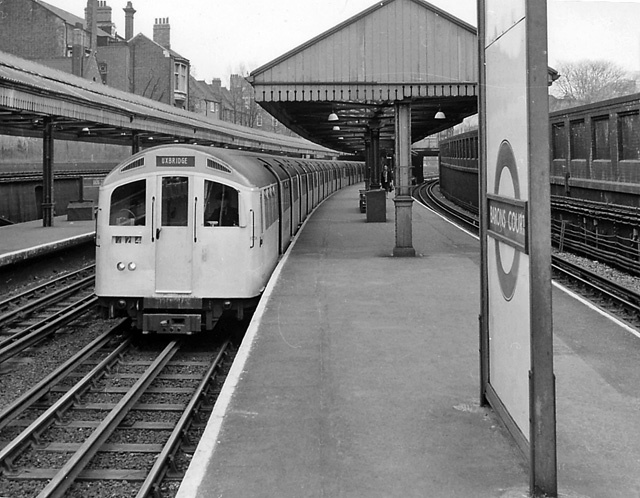The Largest Subway System in the World & 193 More Massive Metros
It’s been a while since we first began investing in planes, trains, and automobiles. While the U.S. may be a culture of cars, public transportation is popular worldwide. Riding the metro, whether it be the subway, underground, or even the more technical electrified rapid transit train system, is a common way of getting from point A to B. But which are the largest?
Now, large is a relative term. Of course, there’s route length: which metro systems span the most miles. But ridership, the number of people who hop on and off, is also a factor in a metro’s largeness.
Then there’s the answer to which city’s metro has the most stations. And perhaps historians could make an argument for the largest amount of years open. As you can see, quite a few categories could lead to different metro systems coming out on top—unless one metro tops them all.
So let’s go aboard the length of routes, number of stations, year opened, and even year of last expansion for the 194 metro stations on the map below.
View Largest Subway Systems in the World in a full screen map
We gathered the data from Wikipedia’s List of metro systems. You can use the data grouping feature to explore the map for yourself. Or read on for more about the Largest Metros in route length, stations, ridership, and what is the oldest subway system in the world.
The Lengthiest Metros Are in Asia
The first metric of a metro’s massiveness that comes to mind is length. Now, the world’s longest subway stretches 743 kilometers (462 miles) across Shanghai, though it’s not the only one longer than 500 kilometers—or even 700. Of all the cities with subways, below are the 10 largest.
- Shanghai Metro – 743 km in route length
- Beijing Subway – 727 km
- Guangzhou Metro – 531.1 km
- Chengdu Metro – 519.2 km
- Moscow Metro – 412.1 km
- Shenzhen Metro – 411 km
- London Underground – 405.2 km
- New York City Subway – 399 km
- Nanjing Metro – 378 km
- Chongqing Rail Transit – 370 km
The 743-kilometer Shanghai Metro is the largest subway system in the world. That’s the equivalent of over 8,000 football fields—and it won’t stop there. The construction of at least five new lines and several extensions are scheduled to start in 2023, adding 411 more kilometers to the already lengthy metro. Upon this expansion’s completion, the Shanghai Metro will stretch across 1,154 kilometers in total. To see more expansion details for the other large metros, check out the map.
Interactive Maps Made Easy
Sign Up Now
Now, Shanghai isn’t the only Chinese city with a massive metro system. In fact, seven of these top 10 are located in China. This includes the second-place Beijing Subway through to the fourth largest subway: the Chengdu Metro.
Perhaps the reason for this is population, or that China’s economic success requires more people needing transport to cities. Either way, Russia, the U.K., and the U.S. are each only home to a single sizeable subway system in the top 10 and the same can be said when it comes to ridership.
Largest in Ridership
As with the lengthiest metros, those largest in annual ridership are dominated by China, with the Shanghai Metro once again topping the charts in the number of people hopping on the metro each year.
| Metro system | Annual ridership (millions) | City | Country |
|---|---|---|---|
| Shanghai Metro | 2,834.69 | Shanghai | China |
| Tokyo Metro | 2,757.40 | Tokyo | Japan |
| Guangzhou Metro | 2,415.60 | Guangzhou | China |
| Beijing Subway | 2,292.65 | Beijing | China |
| Seoul Subway | 2,127.20 | Seoul | South Korea |
| Shenzhen Metro | 1,626.73 | Shenzhen | China |
| Moscow Metro | 1,618.20 | Moscow | Russia |
| Cairo Metro | 1,314.00 | Cairo | Egypt |
| Chengdu Metro | 1,219.62 | Chengdu | China |
| Toei Subway | 1,174.90 | Tokyo | Japan |
While five Chinese countries are accounted for, several new players arrive on the scene: Japan makes its first appearance on a top 10 list. The Tokyo Metro sees the second-most amount of riders each year while astonishingly a second Tokyo-based metro, the Toei Subway, also ranks within the top 10 in riders.
Additionally, South Korea and Eygpt are new to the top 10, while the very same Moscow Metro that was #5 in route length also makes the ridership list, though ultimately China’s metros are still the most impressive. However, a different country’s metro outranks even China in number of stations.
Subways with the Most Stations
New York’s presence in the lengthiest metro systems foreshadows its place atop this section. Another way of measuring the largest metro systems is by how many stations there are. These are the spots where you’d buy your tickets and hop on or off a subway. And while the Shanghai Metro had everyone beat in both route length and ridership, the U.S. makes an appearance with its largest city. New York topples the massive Chinese metro when it comes to the most stations.
- New York City Subway – 424 stations
- Shanghai Metro – 369
- Beijing Subway – 342
- Seoul Subway – 338
- Paris Métro – 304
- Chengdu Metro – 285
- London Underground – 272
- Shenzhen Metro – 270
- Guangzhou Metro – 247
- Madrid Metro – 242
The 424 stations of the New York City Subway make it the largest in the US—and the world—when it comes to stations. This is an exceptional feat considering that aside from emergencies, this subway has operated 24/7 365 days a year throughout most of its history.
In addition to the New York City Subway, the usual players (like China) also top the list with the largest stations. But two new additions include the Paris Métro in France and Spain’s Madrid Metro. And we can’t forget the London Underground, which so far has made it on quite a few largest lists, though never quite at the top…yet.
What’s the Oldest Subway in the World?

The first subway in the world is the London Underground. It’s one of the four subways built in the 1800s, though this one is nearly 30 years older than even the next oldest subway system. Of course, the Chicago “L”, Budapest Metro, and Glasgow Subway weren’t built all that recently either.
Interactive Maps Made Easy
Sign Up Now| Metro system | Year opened | City | Country |
|---|---|---|---|
| London Underground | 1863 | London | United Kingdom |
| Chicago “L” | 1892 | Chicago | United States |
| Budapest Metro | 1896 | Budapest | Hungary |
| Glasgow Subway | 1896 | Glasgow | United Kingdom |
| Paris Métro | 1900 | Paris | France |
| MBTA subway | 1901 | Boston | United States |
| Berlin U-Bahn | 1902 | Berlin | Germany |
| New York City Subway | 1904 | New York City | United States |
| Athens Metro | 1904 | Athens | Greece |
| SEPTA | 1907 | Philadelphia | United States |
As for those constructed in the early 1990s, three are U.S.-based (and all are in the Northeast). In addition, N.Y.C.’s PATH was built just one year after SEPTA, narrowly missing the top 10 and the Big Apple’s claim to two of the oldest subway systems in the world.
And as for the newest? You can see that when you sort the map by “Year opened” and opt for the “2021 – 2010” group.
And for more maps on planes, trains, and automobiles, check out the Commute Times and Transportation Rates of 370 Cities or The World’s Busiest Airports. A hint: most passengers arrive and depart from Georgia.
